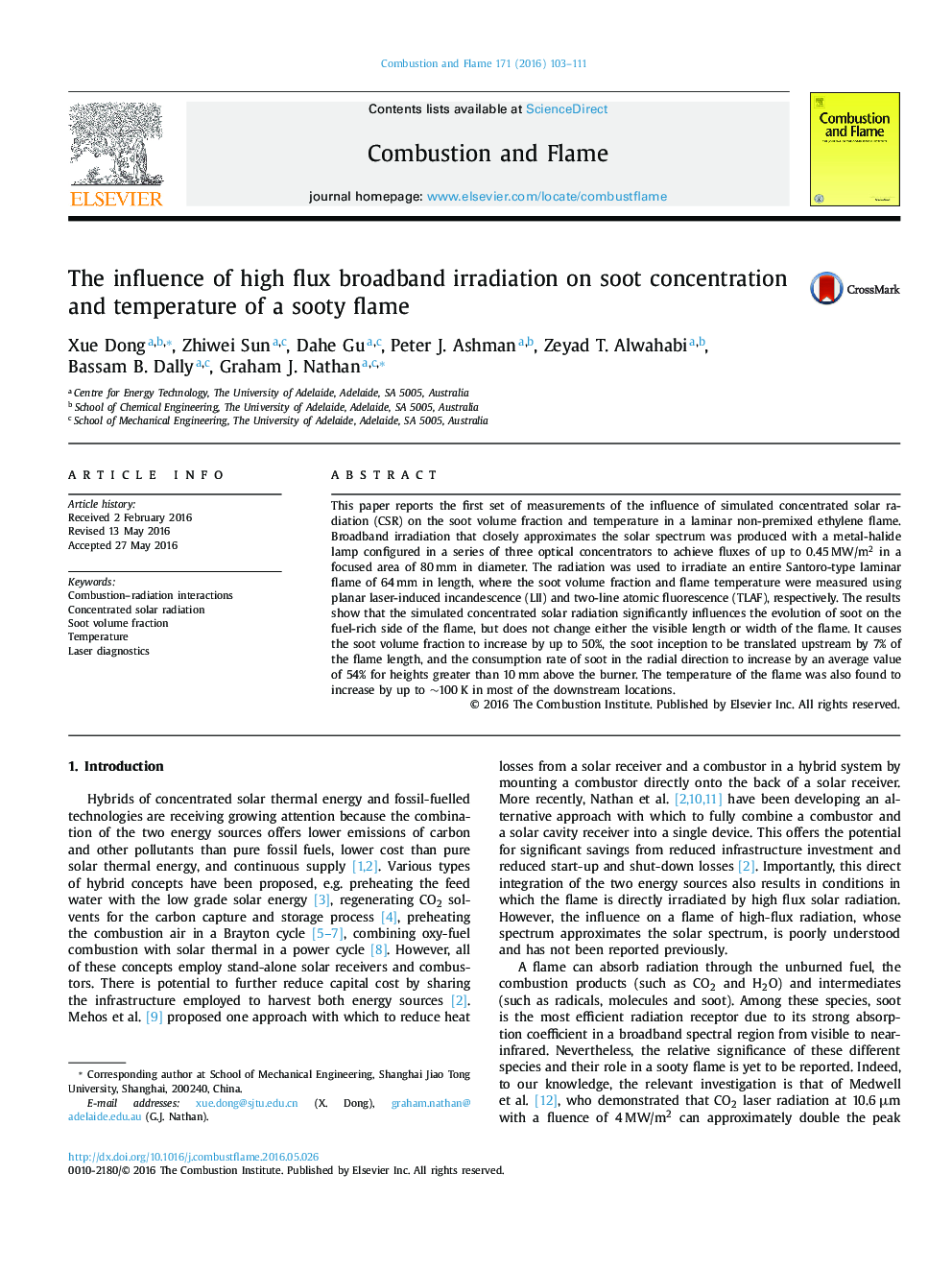| Article ID | Journal | Published Year | Pages | File Type |
|---|---|---|---|---|
| 168455 | Combustion and Flame | 2016 | 9 Pages |
This paper reports the first set of measurements of the influence of simulated concentrated solar radiation (CSR) on the soot volume fraction and temperature in a laminar non-premixed ethylene flame. Broadband irradiation that closely approximates the solar spectrum was produced with a metal-halide lamp configured in a series of three optical concentrators to achieve fluxes of up to 0.45 MW/m2 in a focused area of 80 mm in diameter. The radiation was used to irradiate an entire Santoro-type laminar flame of 64 mm in length, where the soot volume fraction and flame temperature were measured using planar laser-induced incandescence (LII) and two-line atomic fluorescence (TLAF), respectively. The results show that the simulated concentrated solar radiation significantly influences the evolution of soot on the fuel-rich side of the flame, but does not change either the visible length or width of the flame. It causes the soot volume fraction to increase by up to 50%, the soot inception to be translated upstream by 7% of the flame length, and the consumption rate of soot in the radial direction to increase by an average value of 54% for heights greater than 10 mm above the burner. The temperature of the flame was also found to increase by up to ∼100 K in most of the downstream locations.
